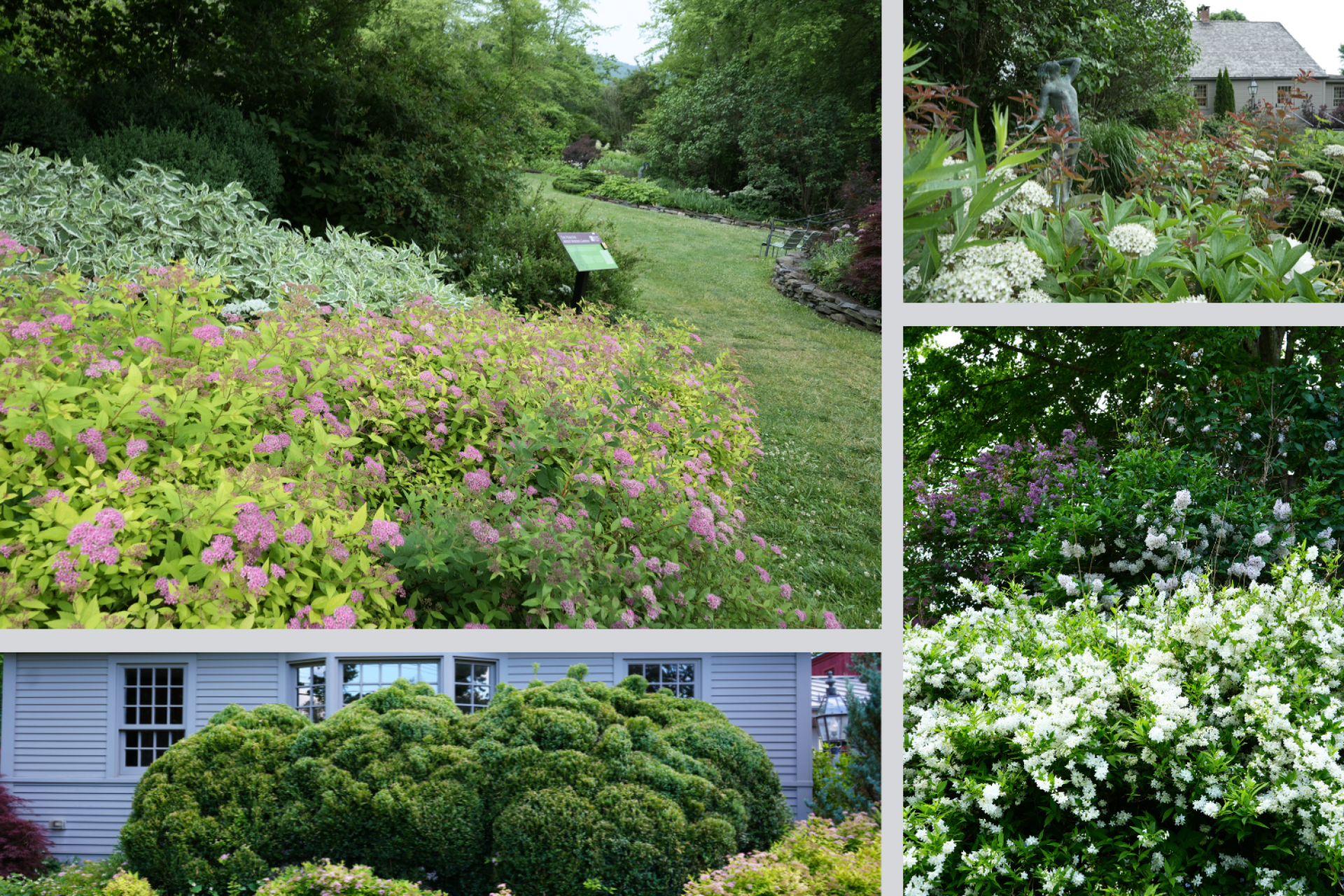You are here
Proctor Mixed-Border Garden
Proctor Mixed-Border Garden
Beatrice Sterling Procter loved pinks, blues, and purples. Those hues — combined with calming white, silver, and maroon accents — form the primary palette for this informal, mixed-border garden, created in her honor by the Lenox Garden Club in 1967. A mixed border uses both woody and herbaceous plants as part of its design.
Building Good Bones
Gardeners and designers often speak of building "good bones," referring to the trees, large shrubs, hedges, paths, walls, and other enduring elements that establish a garden's underlying shape and structure. The "bones" are readily visible in formal gardens, which have strong, often straight lines. But informal, naturalistic gardens such as the Procter Garden have few straight lines, so you must look closely to detect their subtle cadence. The bones may not be easy to spot until winter, when flowers and leaves no longer hide the underlying structure of woody plants and the hardscape. Some gardeners use black and white photos as a way to focus on shapes and composition without being distracted by color when evaluating their gardens.
Did You Know?
Mulching benefits the plants you already have, while discouraging the seeding of new plants and preventing weeds by creating a barrier between sunlight and soil. Depending on the choice of material used as mulch, it can also nurture plants by fortifying the soil with organic matter, retaining moisture, and insulating roots from cycles of freeze and thaw in winter.
Gardeners commonly use chopped leaves, ground bark, or pine needles as mulch. Increasingly, they also use a groundcover of living plants ("green mulch") to create a protective layer.
Among the Collection:
Help Our Garden Grow!
Your donation helps us to educate and inspire visitors of all ages on the art and science of gardening and the preservation of our environment.
All Donations are 100 percent tax deductible.






















